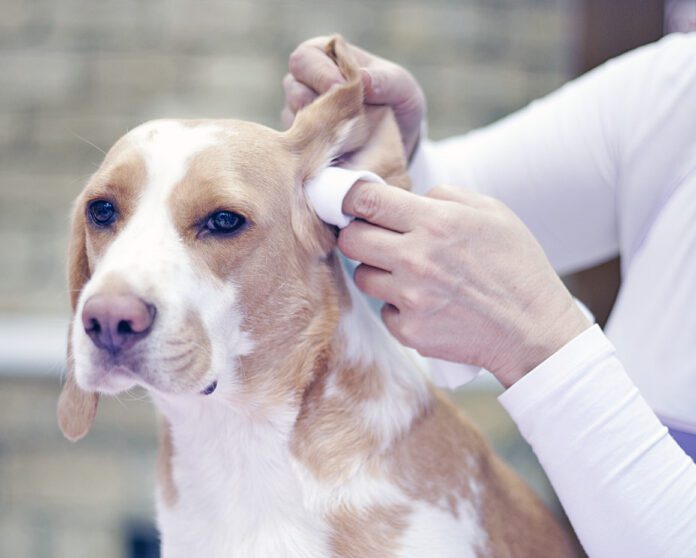For dogs who get a lot of ear infections, cleaning the ears at home can be helpful. If you have a drop-eared dog – especially one who loves water – you’ve probably experienced gunky or infected ears. Prick-eared dogs can also get bacterial, yeast, or ear mite infections.
The first step with an ear infection is to get a veterinary exam to determine the cause of the infection and get the right medication. But cleaning the ears will be part of the treatment plan and preventive care for dogs who are prone to recurring ear infections.
What Can I Use to Clean My Dog’s Ears at Home?
You don’t need much to clean your dog’s ears:
- A dog-safe ear cleansing solution
- Cotton balls
- Optional: some gauze and/or cotton tipped applicators
- Optional: premade dog ear wipes
The ear cleansing solution is the most important item. These cleansers are safe even if your dog has a ruptured ear drum and contain a drying agent so that your dog’s ears will dry quickly once you are done with cleaning. You can purchase an ear cleanser at your vet’s office or any pet supply store.
In a pinch, equal parts of water and white or apple cider vinegar may work, but this is not the best choice for long-term care. Unlike an ear cleaning solution, this mixture does not dry as quickly. Persistent moisture in your dog’s ears can encourage more infections because bacteria thrive in a warm, moist environment.
The cotton balls and gauze are perfect for wiping out ears. Cotton-tipped applicators can be used to remove gunk from the nooks and crannies of the ear but only use these in areas where you can see. Reaching too deep could accidentally rupture your dog’s ear drum.
How to Clean Dog Ears
- Apply ear cleansing solution to a cotton ball.
- Place the soaked cotton ball in your dog’s ear and squish it around. Most dogs tolerate this better than squirting the cleanser directly into the ear.
- Gently wipe the ear with cotton or gauze, using a new piece each time until it comes back clean. Note: If your dog’s ear starts to bleed, stop cleaning. The tissue is too sensitive.
- Use a cotton-tipped applicator to carefully remove debris from nooks and crannies of the ear that you can see easily. Do not reach deep into the ear, as you could accidentally rupture the ear drum.
- Repeat with the other ear.
Follow your veterinarian’s instructions for how often to clean the ears. In many cases, cleaning will be a couple times a week while treating an infection, and then weekly or every other week for long term care, but this protocol can vary.






